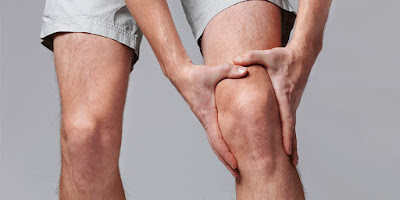Bone density and muscle mass are often the primarily discussed victims of aging as older age contributes to muscle atrophy and osteoporosis. But what about the all-important cartilage?
What is Cartilage?
Cartilage is a type of connective tissue that is critical to the musculoskeletal system. Firm, flexible, and whitish in color, cartilage can be found all over the body from the ear to the larynx and most notably in joints, acting as a cushion between two or more articulating bones.
There are two different types of cartilage found in the body. The first and most abundant is hyaline cartilage which is found in the respiratory tract and at the ends of bones. Articular cartilage in the knee, for example, is a type of hyaline cartilage; it absorbs shock when you walk and run, tolerates shearing forces between the bones that meet at the knee, and bears up to 20 times a person’s body weight. Hyaline cartilage has few fibers and is kept healthy and lubricated by synovial fluid.
The second, fibrous cartilage, is composed of a thicker, collagen-like matrix and can be found in insertion zones of tendons and ligaments, in the articular and vertebral discs (in the spine), and in the meniscus.
What Happens to Cartilage Over Time?
At infancy, a baby’s skeleton is composed largely of cartilage. Pliable and flexible, cartilage makes the baby less vulnerable to breaks as they learn to crawl, stand, and walk. Over time, the cartilage hardens into bone, though you may be surprised to learn that the bone development process isn’t fully complete until age 25.
Hyaline cartilage remains, however, in key places like articulating joints - the knees, elbows, shoulders, and so on. When cartilage becomes damaged because of a traumatic injury or general wear and tear, it, unfortunately, cannot regenerate on its own. It is one of the few tissues in the body that does not have its own blood supply, so when damage occurs, it is not miraculously bathed in nutrient-rich fluids that facilitate healing.
In addition, articular cartilage relies on just one single type of cell for renewal (or cell turnover) called a chondrocyte; repeated injury and older age results in less and less activity from chondrocytes. On top of all that, key proteins known as proteoglycans found in connective tissue that reinforce cartilage and make it more resilient become altered over time resulting in a higher risk of injury and damage to the cartilage itself.
Common Conditions that Affect Cartilage
There are a handful of common cartilage-specific conditions that affect older adults, especially those who were very active earlier in life as well as those who are obese.
Chondromalacia patella - abnormal softening or degeneration of cartilage in the knee can contribute to a condition known as chondromalacia patella, or runner’s knee. Worn down, thin cartilage cannot fully protect the knee cap and people who suffer from this condition end up with severe pain caused by the friction of the thigh bone rubbing directly against the kneecap. Chondromalacia can also occur in the hip and shoulder joints.
Osteoarthritis - the most common form of arthritis, osteoarthritis (also known as degenerative joint disease) develops slowly over time due to deterioration of cartilage. Symptoms of osteoarthritis include pain, stiffness, and tenderness around a joint as well as limited range of motion and loss of flexibility. Bone spurs can also develop as a result of cartilage wearing away, and some people even feel a grating sensation when they use an affected joint.
Herniated disk (slipped disk) - degenerative disk disease, or the wearing down of the cartilaginous joints of the spine, can result in spinal disks “slipping” and bulging out of their protective casing. This condition is marked by severe back pain, limited range of motion, even numbness and paralysis associated with nerve damage from the herniated disk placing pressure on spinal nerves.
Preventing Cartilage Damage
If you are looking to prevent cartilage damage and strengthen your musculoskeletal system to stave off these painful conditions, experts recommend following these tips:
- Exercise regularly to help strengthen bones and muscles and take some of the burden off your joints. Choose fitness activities wisely, however, based on your age and ability levels. You don’t want to overdo exercise as it can exacerbate cartilage deterioration.
- Manage a healthy weight. Carrying about extra weight places excessive pressure on vulnerable joints like the hips, knees, and ankles. Lose weight to offload some of the stress on these joints and preserve the health of your cartilage.
- Wear protective gear (like orthotic braces and splints) and use appropriate equipment when playing sports and exercising to avoid overloading your joints.
- Rest painful and swollen joints, and use cold and hot therapy to reduce inflammation, improve circulation, and relieve pain.

No comments:
Post a Comment
Your comments are welcome.